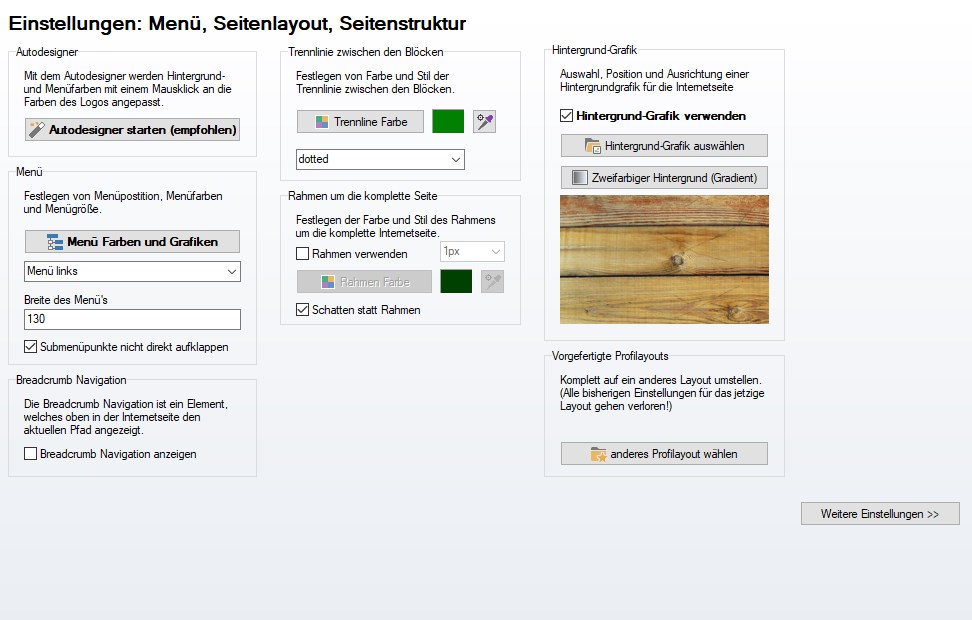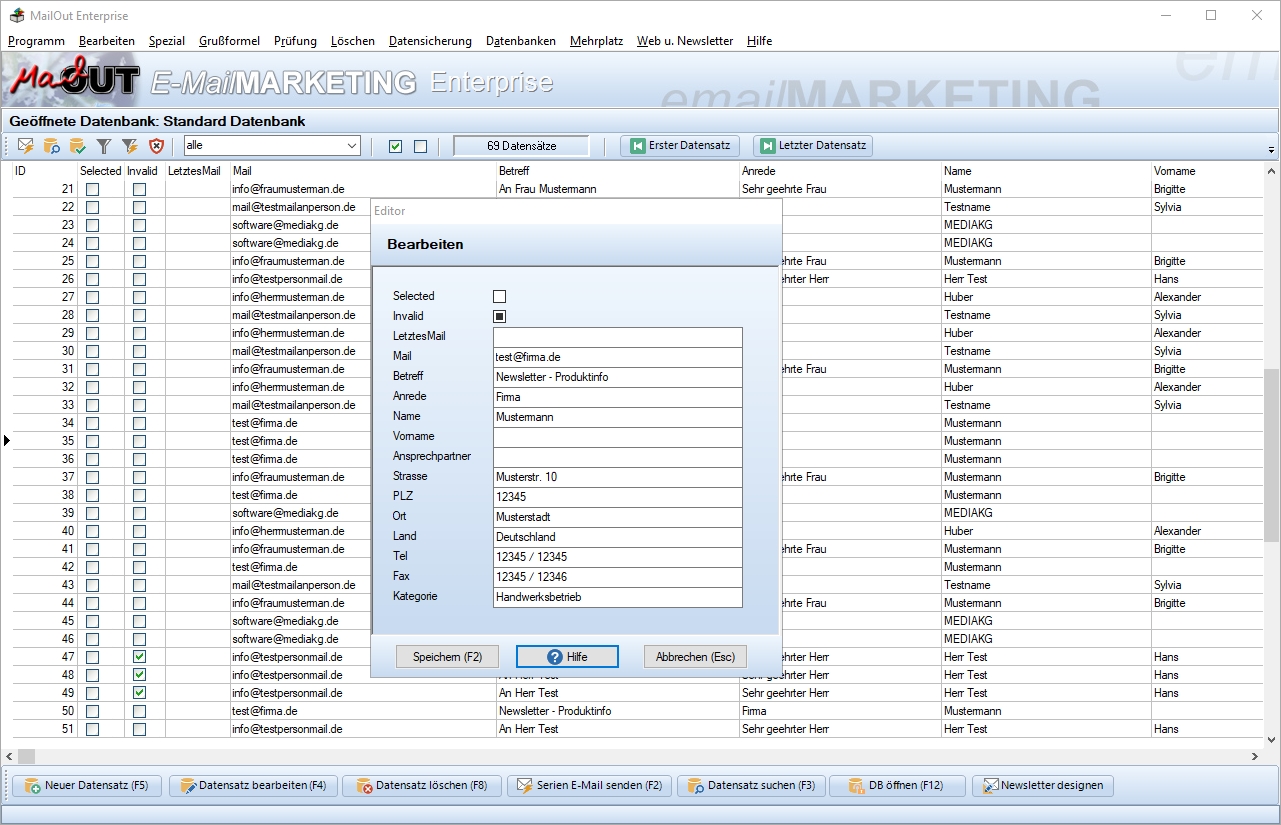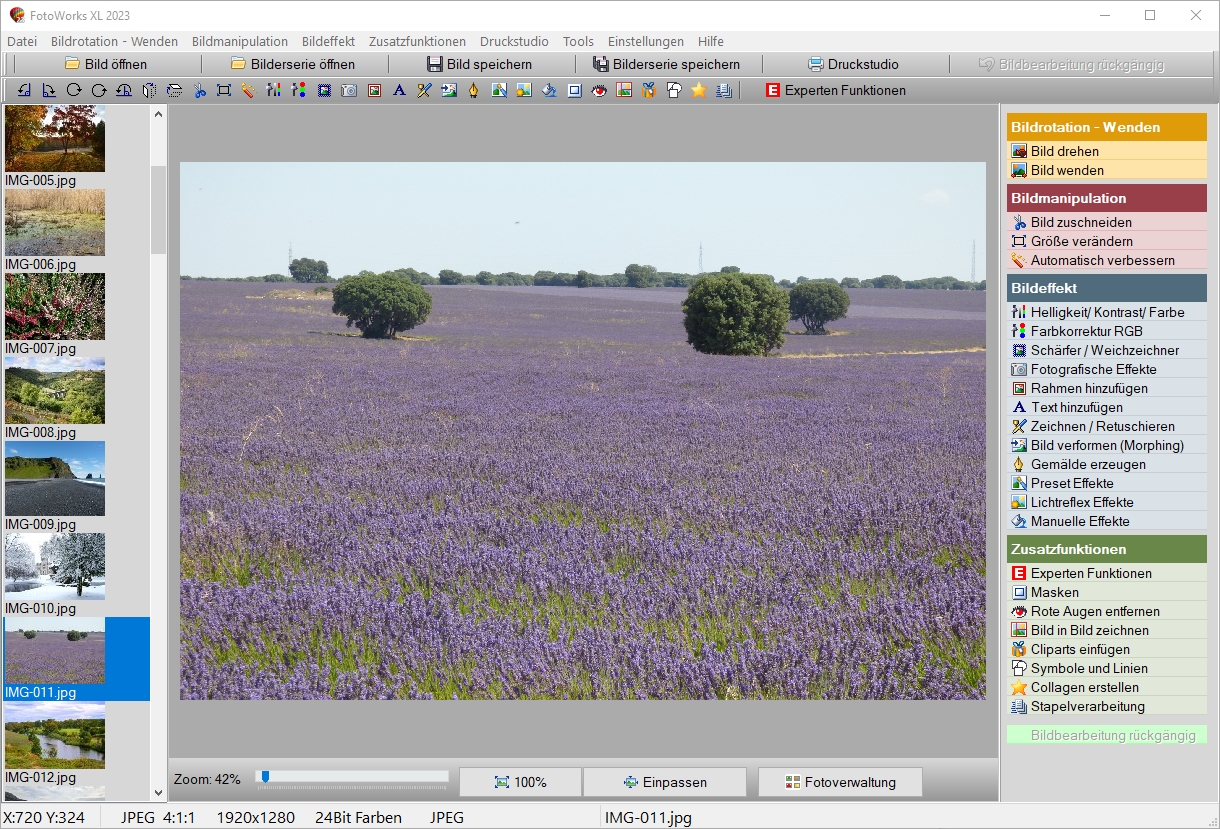Bist du es leid, mit der Formatierung deines Textes auf verschiedenen Plattformen zu kämpfen? Tauche ein in die Welt von Markdown – den Code, der das Schreiben und Formatieren mühelos vereinfacht. Mit seiner einfachen Syntax und leistungsstarken Fähigkeiten zum Erstellen von Listen, Links, Bildern und Überschriften ist Markdown ein Wendepunkt für Blogger und Schriftsteller gleichermaßen.
Verbessere deine Inhaltskreation mit Markdown und entfalte dein volles Potenzial im digitalen Bereich. Lasst uns gemeinsam Markdown meistern und dein Blogging-Spiel auf neue Höhen bringen.
Die Power von Markdown verstehen

Eintauchen in die Welt von Markdown enthüllt eine Welt, in der Einfachheit und Effizienz zusammenfließen. Die prägnante Syntax von Markdown ermöglicht eine nahtlose Formatierung und macht es zur ersten Wahl für Blogger, die nach einer vereinfachten Inhalterstellung suchen.
Mit seiner intuitiven Verwendung von Symbolen und reinem Text befähigt Markdown Autoren, sich auf ihre Worte ohne Ablenkungen zu konzentrieren. Ob beim Erstellen von Überschriften, Listen oder Inline-Code-Snippets, die Vielseitigkeit von Markdown kommt in jedem Aspekt des Schreibens zum Vorschein. Markdown zu umarmen bedeutet, eine standardisierte Sprache zu umarmen, die Plattformen überschreitet, von GitHub bis commonmark.
Durch das Meistern der Feinheiten der Markdown-Syntax erschließen Blogger ein Tor zur Verbesserung ihrer Inhalte mit Bildern und Links, die nahtlos in ihren Text integriert werden. In der dynamischen Landschaft des Online-Schreibens steht Markdown als Leuchtturm der Effizienz und Präzision für diejenigen, die es wagen, seine Kraft zu nutzen.
Vorteile der Verwendung von Markdown beim Bloggen
Entfessle das Potenzial deines Blogs mit der gestrafften Effizienz von Markdown. Indem du diese leichte Auszeichnungssprache umarmst, öffnest du Türen zu einer Welt nahtloser Textformatierung und -organisation.
Markdown vereinfacht den Schreibprozess und ermöglicht es dir, dich auf die Erstellung von Inhalten zu konzentrieren, ohne von komplexer Syntax abgelenkt zu werden. Mit seinem intuitiven Ansatz zur Strukturierung von Text mit einfachen Symbolen wie Sternchen und Hashtags verbessert Markdown die Lesbarkeit und spart Zeit. Ob du ein erfahrener Blogger bist oder gerade erst anfängst, die Kraft von Markdown zu nutzen, kann dein Blogging-Spiel verbessern, indem es eine benutzerfreundliche Plattform zum Erstellen überzeugender und visuell ansprechender Inhalte bietet.
Sag auf Wiedersehen zur umständlichen HTML-Codierung und hallo zu einem effizienteren Schreiberlebnis mit Markdown zur Hand. Hebe deinen Blog heute mit den Vorteilen der Markdown-Integration hervor!
Wesentliche Markdown-Syntax für Blogger
Meisterhafte Blogger verstehen die Bedeutung des Erlernens essentieller Markdown-Syntax. Von Überschriften bis zu Listen, Inline-Formatierung bis zur Einbettung von Bildern, die Kenntnis der Feinheiten des Markdown-Codes ist der Schlüssel zur Erstellung visuell ansprechender und strukturierter Inhalte. Durch die Nutzung der commonmark Syntax und das Vertrautmachen mit der Markdown-Darstellung von GitHub kannst du dein Schreiben auf neue Höhen heben.
Wie man die gängige Markdown-Syntax verwendet
Willkommen beim Leitfaden von HTMLMarkdown zur häufigsten Markdown-Syntax. Unser Ziel ist es, dich zu befähigen, deinen Text schnell und einfach für dein nächstes Webprojekt oder geschriebenes Stück zu formatieren. Lass uns direkt eintauchen!
Überschriften
Überschriften strukturieren dein Dokument und sind leicht in Markdown zu erstellen. Um eine Überschrift zu erstellen, füge Rautezeichen (#) vor ein Wort oder eine Phrase. Die Anzahl der #, die du verwendest, bestimmt die Größe der Überschrift.
# Heading 1
## Heading 2
### Heading 3
#### Heading 4
##### Heading 5
###### Heading 6
Betonungen
Füge deinem Text Betonung mit Fett- oder Kursivschrift hinzu, indem du Wörter oder Phrasen in ** oder * einwickelst.
*This text will be italicized*
**This text will be bold**
Listen
Organisiere Informationen mit ungeordneten und geordneten Listen.
Unordered Lists:
- Item 1
- Item 2
- Item 3
Ordered Lists:
1. First item
2. Second item
3. Third item
Links
Das Einbetten von Links hilft deinen Lesern, zusätzliche Ressourcen zu entdecken.
[HTMLMarkdown](https://www.htmlmarkdown.com)
Bilder
Füge Bilder hinzu, um deine Inhalte ansprechender zu gestalten.

Code
Für Inline-Code umgebe den Text mit Backticks (`). Um Codeblöcke zu erstellen, verwende dreifache Backticks („`) oder Einrückungen.
Inline Code:
`
This is inline code
`
Code Block:
Oder mit Einrückung:
This is a code block with indentation.
Blockzitate
Zitiere Quellen oder hebe eine Information mit Blockzitaten hervor.
> This is a blockquote example.
Horizontale Linie
Schaffe eine klare Trennung im Inhalt mit einer horizontalen Linie.
---
Denk daran, dass HTMLMarkdown dir zwar die Werkzeuge bietet, um Inhalte nahtlos zwischen HTML und Markdown zu konvertieren, es jedoch immer noch entscheidend ist, Markdown richtig zu verstehen und zu verwenden, um sicherzustellen, dass dein Inhalt bestmöglich aussieht. Übe weiterhin diese gängigen Syntaxbeispiele, um deine Schreibeffizienz und -klarheit zu verbessern.
Für weitere Tipps und Werkzeuge besuche unsere Website, und gemeinsam brechen wir die technischen Barrieren in der Inhalterstellung!
Bilder und Links mit Markdown integrieren
Tauche in die Welt der Vielseitigkeit von Markdown ein, indem du Bilder und Links nahtlos integrierst. Mit Markdown wird das Hinzufügen von visuellen Elementen zu deinen Blogposts mühelos, was die ästhetische Anziehungskraft und Benutzererfahrung insgesamt verbessert. Nutze die einfache Syntax zum Einfügen von Bildern, um sicherzustellen, dass sie deinen Text nahtlos ergänzen. Das Einbetten von Hyperlinks ist gleichermaßen unkompliziert und ermöglicht es dir, Leser leicht zu externen Quellen oder anderen Abschnitten innerhalb deines Blogs zu führen. Indem du diese Techniken meisterst, kannst du visuell ansprechende Inhalte erstellen, die dein Publikum fesseln und die Wirkung deiner Botschaft verstärken. Erkunde die endlosen Möglichkeiten, multimediale Elemente in dein Markdown-Schreiben zu integrieren, um die Wirksamkeit deines Storytellings zu verstärken und die Leser auf einer tieferen Ebene zu engagieren. Verbessere dein Blogging-Spiel, indem du die Möglichkeiten der Bild- und Linkintegration von Markdown nutzt.
Die Formatierung mit fortgeschrittenen Markdown-Techniken verbessern

Das Erkunden der Feinheiten der Markdown-Syntax ermöglicht es Bloggern, ihren Inhalt mit fortgeschrittenen Formatierungstechniken aufzuwerten. Die Integration von Elementen wie Codeblöcken und Inline-Bildern steigert die visuelle Anziehungskraft und Funktionalität von Blogposts.
Durch das Beherrschen der Commonmark-Standards und das Verständnis von HTML-Umwandlungen können Blogger nahtlos dynamische und ansprechende Inhalte erstellen. Die Nutzung von GitHub für kollaboratives Schreiben und Versionskontrolle vereinfacht weiterhin den Bearbeitungsprozess. Überschriftenstrukturen und Listenformatierungen sorgen für Klarheit und Organisation im geschriebenen Text und gewährleisten, dass Leser problemlos durch den Inhalt navigieren können. Die Nutzung von Links innerhalb des Markdown-Texts ermöglicht eine nahtlose Navigation zu externen Quellen oder verwandten Artikeln und bereichert so das gesamte Leseerlebnis.
Mit einem soliden Verständnis dieser fortgeschrittenen Markdown-Techniken können Blogger die visuelle Anziehungskraft, Lesbarkeit und Interaktivität ihrer Blogs verbessern und so ihr Blogging-Spiel auf neue Höhen bringen.
Effizienzsteigerung durch Tastaturkürzel bei der Markdown-Bearbeitung
Entdecke einen Wendepunkt in deinem Markdown-Bearbeitungsworkflow durch das Beherrschen von Tastaturkürzeln. Diese effizienten Befehle sparen wertvolle Zeit und rationalisieren deinen Schreibprozess. Ob du durch Überschriften navigierst, Text formatierst oder Links einfügst, Tastaturkürzel in Markdown bieten ein nahtloses Erlebnis.
Indem du dich mit diesen zeitsparenden Werkzeugen vertraut machst, kannst du deine Produktivität steigern und dich auf das Erstellen überzeugender Inhalte konzentrieren. Nutze die Macht der Bequemlichkeit, während du mühelos durch deine Markdown-Dokumente mit nur wenigen Tastenanschlägen navigierst. Sag auf Wiedersehen zu mühsamen manuellen Aufgaben und hallo zu einem effizienteren und dynamischeren Blogging-Erlebnis.
Das Beherrschen von Tastaturkürzeln ist die Geheimwaffe, die deine Herangehensweise an die Markdown-Bearbeitung revolutionieren wird und es dir ermöglicht, deine Kreativität ohne Behinderung durch unnötige Schritte zu entfesseln. Hebe dein Blogging-Spiel durch die Integration dieser unverzichtbaren Werkzeuge in deine tägliche Routine auf ein neues Level.
Mit Markdown kompatible kollaborative Schreibwerkzeuge
Die Integration kollaborativer Schreibwerkzeuge in deinen Markdown-Workflow kann die Art und Weise, wie du an Projekten mit Teams arbeitest, revolutionieren. Plattformen wie GitHub bieten eine nahtlose Integration mit Markdown, die Echtzeit-Zusammenarbeit und Versionskontrolle ermöglicht.
Durch die Nutzung der Commonmark-Syntax und Inline-Code-Snippets können Teammitglieder leicht kommunizieren und ohne Verwirrung Änderungen vornehmen. Diese Werkzeuge rationalisieren den Schreibprozess, indem sie ein zentrales Hub für Diskussionen, Feedback und Inhalterstellung bereitstellen.
Mit Funktionen wie Überschriften, Links, Listen und Bildern, die in Markdown unterstützt werden, wird die Zusammenarbeit effizient und organisiert. Ob du an einem Blogpost oder einem technischen Dokument arbeitest, diese Werkzeuge steigern die Produktivität und fördern die Teamarbeit in einer digitalen Umgebung. Nutze die Macht kollaborativer Schreibwerkzeuge, um deine Inhalterstellungserfahrung auf neue Höhen zu heben.
Tabellen und Listen zur Organisation von Inhalten in Markdown nutzen

Das Einbinden von Tabellen und Listen ist eine dynamische Möglichkeit, deinen Inhalt effizient in Markdown zu strukturieren. Durch die Nutzung einfacher Syntax, wie Bindestriche für Listen und senkrechte Striche (Pipes) für Tabellen, kannst du Informationen auf visuell ansprechende Weise präsentieren.
Markdown ermöglicht Flexibilität bei der Organisation von Daten, sei es die Erstellung nummerierter Listen für Schritt-für-Schritt-Anleitungen oder das Erstellen von Tabellen zum Vergleich von Informationen nebeneinander. Diese Funktion vereinfacht die Lesbarkeit deines Inhalts und verbessert das gesamte Benutzererlebnis.
Nutze die Kraft von Markdown-Tabellen und Listenfunktionen, um die Organisation deiner Blogposts zu verbessern und dein Publikum mit klarem, strukturiertem Informationsfluss zu fesseln. Die Beherrschung dieses Aspekts von Markdown wird zweifellos den Professionalismus und die Wirksamkeit deiner Blogging-Bemühungen steigern.
Interaktive Elemente wie Codeblöcke und Aufgabenlisten in Markdown erkunden
Tauche ein in die Welt von Markdown und entfessele deine Kreativität, indem du interaktive Elemente wie Codeblöcke und Aufgabenlisten erkundest. Diese Funktionen erhöhen nicht nur die visuelle Anziehungskraft deines Inhalts, sondern strukturieren auch komplexere Informationen übersichtlich.
Durch die Integration von Codeblöcken kannst du effektiv Code-Snippets innerhalb deines Textes darstellen, was es den Lesern erleichtert, Programmierkonzepte zu verstehen. Aufgabenlisten ermöglichen es dir andererseits, handlungsorientierte Punkte zu erstellen, die als erledigt abgehakt werden können, perfekt für die Verwaltung von Aufgaben oder die Gliederung von Schritten in einem Tutorial.
Mit der Vielseitigkeit von Markdown kannst du diese interaktiven Elemente mühelos in deinen Schreibworkflow integrieren und so die Gesamtqualität und das Engagement deiner Blogposts steigern. Nutze die Kraft von Markdown, um deinen Inhalterstellungsprozess zu transformieren und dein Publikum mit dynamischen und interaktiven Elementen zu fesseln.
Steigere dein Blogging-Spiel, indem du diese fortgeschrittenen Techniken meisterst und deine Leser mit fesselnden Visuals und organisierten Inhaltsstrukturen faszinierst.
Fazit
Entdecke die Kunstfertigkeit von Markdown, während du dein Blogging-Spiel verbesserst. Nutze die Effizienz und Klarheit der Markdown-Syntax, um deinen Inhalterstellungsprozess zu optimieren.
Durch das Beherrschen der Commonmark-Prinzipien kannst du mühelos Überschriften, Listen und Inline-Elemente in deinem Text formatieren. Bereichere deine Blogposts mit Bildern und Links mithilfe einfacher Markdown-Codes. Erkunde die Kraft der HTML-Integration innerhalb von Markdown für erweiterte Formatierungsoptionen. Ob du alleine schreibst oder auf Github zusammenarbeitest, Markdown bietet eine vielseitige Plattform zur Erstellung ansprechender Inhalte. Verbessere dein Schreiberlebnis mit Tastaturkürzeln, die die Produktivität bei der Markdown-Bearbeitung steigern.
Entfessele das Potenzial interaktiver Elemente wie Codeblöcke und Aufgabenlisten, um deine Leser effektiv zu fesseln. Mit einem starken Verständnis der Syntax und Funktionen von Markdown kannst du dein Blogging auf neue Höhen bringen und das Publikum mit überzeugendem Inhalt fesseln. Steigere dein Blogging-Spiel, indem du das volle Potenzial der Markup-Fähigkeiten von Markdown nutzt – deine Leser werden es dir danken!
FAQ
Wofür wird Markdown verwendet?
Markdown ist eine leichtgewichtige Auszeichnungssprache, die zur Formatierung von reinen Textdokumenten verwendet wird. Sie ermöglicht es den Benutzern, leicht strukturierte Dokumente mit einfacher Syntax zu erstellen, einschließlich Überschriften, Listen, Links und Hervorhebungen. Markdown wird häufig in der Webentwicklung und der Inhalterstellung verwendet, um schnell Texte zu schreiben und zu formatieren, ohne komplexe HTML-Codierung zu benötigen. Es ist ideal für das Erstellen von Blogposts, Dokumentationen, README-Dateien und anderen Arten von Inhalten, die ein sauberes und organisiertes Layout erfordern. Markdown ist benutzerfreundlich und kann mit Werkzeugen wie HTMLMarkdown in HTML oder andere Formate konvertiert werden, was es vielseitig für verschiedene Veröffentlichungsplattformen macht. Insgesamt vereinfacht Markdown den Prozess des Schreibens und Formatierens von Texten für die Online-Inhalterstellung und erhält dabei Lesbarkeit und Effizienz.
Unterscheidet sich Markdown von HTML?
Markdown und HTML sind zwei verschiedene Auszeichnungssprachen, die zur Formatierung von Texten im Web verwendet werden. HTML, oder HyperText Markup Language, ist eine komplexe Sprache, die hauptsächlich verwendet wird, um Inhalte auf Websites zu strukturieren und zu präsentieren. Sie beinhaltet Tags und Attribute, um Elemente wie Überschriften, Absätze, Links, Bilder und mehr zu definieren. Andererseits ist Markdown eine einfachere Auszeichnungssprache, die für die leichte Formatierung von reinem Text entworfen wurde, der in HTML umgewandelt werden kann. Markdown verwendet Symbole wie Sternchen oder Unterstriche, um Formatierungselemente wie Header, Listen, fett oder kursiv gedruckten Text zu kennzeichnen. Es wird weitgehend auf Schreibplattformen wie GitHub, Slack und verschiedenen Blogging-Plattformen wegen seiner Einfachheit und Lesbarkeit verwendet. Während HTML und Markdown beide dem Zweck dienen, Texte im Web zu formatieren, richten sie sich an unterschiedliche Benutzerbedürfnisse. HTML bietet mehr Kontrolle über das Design und die Struktur einer Webseite, erfordert jedoch ein tieferes Verständnis von Codierungskonzepten. Im Gegensatz dazu bietet Markdown eine schnellere Möglichkeit, Inhalte zu formatieren, ohne in komplexe Syntax einzutauchen. Letztendlich hängt die Wahl zwischen HTML und Markdown vom Grad der Kontrolle und Einfachheit ab, die für ein bestimmtes Projekt erforderlich sind.
Was ist Microsoft Markdown?
Microsoft Markdown ist eine leichtgewichtige Auszeichnungssprache, die es Benutzern ermöglicht, reine Textdokumente mit einfacher Syntax zu formatieren. Es ähnelt anderen Markdown-Sprachen, kann aber zusätzliche Funktionen oder Integrationen spezifisch für Microsoft-Produkte haben. Mit Microsoft Markdown können Benutzer leicht formatierte Dokumente erstellen, ohne komplexe Formatierungswerkzeuge zu benötigen. Diese Einfachheit macht es ideal für schnelle Notizen, das Erstellen von Dokumentationen oder das Schreiben von Blogposts. Zusätzlich kann Microsoft Markdown für die Veröffentlichung online oder zum Teilen mit anderen in HTML oder andere Formate konvertiert werden. Insgesamt bietet Microsoft Markdown eine benutzerfreundliche und effiziente Möglichkeit, strukturierte Dokumente im Microsoft-Ökosystem zu erstellen.
Kann man Markdown in Google Docs verwenden?
Ja, es ist möglich, Markdown in Google Docs durch die Nutzung von Drittanbieter-Add-ons oder Erweiterungen, die speziell für Markdown-Formatierung entworfen wurden, zu verwenden. Diese Add-ons ermöglichen es Benutzern, Texte mit der Markdown-Syntax innerhalb der Google Docs-Schnittstelle zu schreiben und zu formatieren. Obwohl Google Docs selbst keine native Unterstützung für Markdown bietet, überbrücken diese Erweiterungen die Lücke, indem sie eine Möglichkeit für Benutzer bieten, Markdown-Styling und -Struktur auf ihre Dokumente anzuwenden. Eine beliebte Option ist die Erweiterung „Markdown Here“, die es Benutzern ermöglicht, direkt innerhalb eines Google Docs-Dokuments in Markdown zu schreiben. Durch die Installation dieser Erweiterung können Benutzer ihren in Markdown formatierten Text leicht in das mit Google Docs kompatible Rich-Text-Format umwandeln. Dies ermög
Referenzen
Hier findest du Links zu Referenzen, die du in deinem Blog verlinken kannst, um die Domain-Autorität, PageRank, Relevanz und die gesamte SEO-Leistung durch Generierung von Traffic und Steigerung der Sichtbarkeit zu verbessern.









 Bildbearbeitungsprogramm Vergleich
Bildbearbeitungsprogramm Vergleich